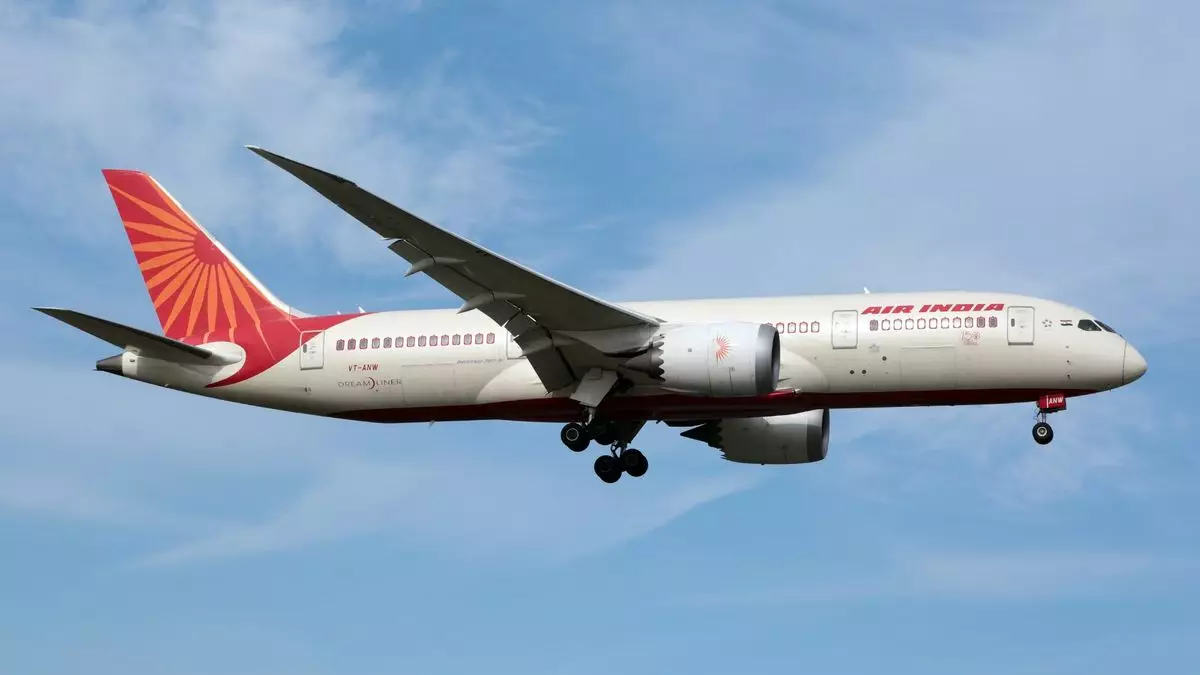Air India, a name synonymous with the Indian aviation landscape, is undergoing a momentous transformation under the stewardship of the Tata Group. With the announcement of bold growth ambitions from CEO Campbell Wilson shortly before the unfortunate crash of Flight 171, Air India’s aspirations seemed to be soaring. This tragic event, which recently claimed 270 lives, served as a stark reminder of the airlines’ vulnerabilities as it tries to rebound from decades of stagnation and mismanagement.
Under Tata’s ownership, Air India has embarked on an aggressive modernization and expansion campaign. The strategic vision includes the acquisition of remarkable numbers of new aircraft, with 570 orders placed and notable mergers with Vistara and AirAsia India. The intention is to construct a robust, service-oriented airline prepared to capitalize on India’s burgeoning aviation market. But the backdrop of the Flight 171 disaster sheds a different light on Air India’s path – one that is fraught with risks and challenges that could derail even the most well-laid plans.
Historical Hauntings: From State-Owned Struggles to New Beginnings
The transition from being a state-owned enterprise to a privately managed airline is laden with hurdles, especially when previous years were marked by neglect and political interference. Campbell Wilson has pointed out the numerous systemic issues that plagued Air India, from outdated aircraft to obsolete IT systems and inadequate staffing over the last two decades. Tata’s endeavor to inject vitality back into the airline has yielded promising results, placing more than 30 previously grounded planes back in the air and significantly updating the fleet’s interiors.
Yet, even as Air India fights to restore its image and turn a profit, operational performance remains markedly subpar. The airline has struggled with on-time performance, landing in the bottom tier of global carriers despite efforts to accelerate improvements. Compounding these challenges is the airline’s need to climb out of the financial hole from which it emerged. Although recent reports suggest an operational profit, the overall financial health of Air India still faces scrutiny, especially as it navigates the repercussions of Flight 171.
The Challenges of Meeting Skyrocketing Demand
As the world witnesses a revival in aviation, India’s growth trajectory is a beacon of opportunity. The country is poised to surpass Japan in economic stature, with the air travel sector expected to grow substantially. Yet, despite being the world’s most populous nation, India has disappointingly limited capacity in its international aviation segment, operating a mere 69 widebody aircraft. The statistics paint a troubling picture – Indian airlines only capture 21% of the international market, leaving the majority for foreign carriers, particularly those hailing from the Gulf.
In the midst of this burgeoning demand, Air India’s struggles become even more pronounced. The looming question is whether the airline can rise to the occasion and meet the expectations of a rapidly growing travel demographic. With significant room for growth—especially if domestic traveler rates align with those in China—Air India finds itself at a critical juncture. Our perception of the airline will rely heavily on how it handles this pivotal moment as much as it will on its capacity to expand.
Rebuilding Trust: The Path Forward
As Air India grapples with the aftermath of the Flight 171 crash, the airline is confronted with the reality that reputation and trust are hard-won yet easily lost. The upcoming months will be critical as investigators work tirelessly to determine if technical failures or lapses in protocol contributed to the tragedy. The results could dictate Air India’s next steps—perhaps signaling a fundamental shift in operational safety practices and protocols.
The insights of industry experts, such as John Strickland, underscore the complexity of revitalizing an airline steeped in history and challenges. The unfortunate timing of this event poses an obstacle, misaligning the airline’s transformation narrative with the immediate need for a strong response to public safety and operational scrutiny.
For the Air India brand, carving a new identity goes hand in hand with restoring public faith in its services. As the chairman, N. Chandrasekaran, urged employees to view this tragedy as a catalyst for change, there lies an opportunity for introspection and bold strategies. Will Air India manage to transform the lessons of its past into a new chapter, or will it remain overshadowed by its failures? The aircraft might take flight again, but the journey toward redemption seems far more intricate than simple expansion plans.


Leave a Reply